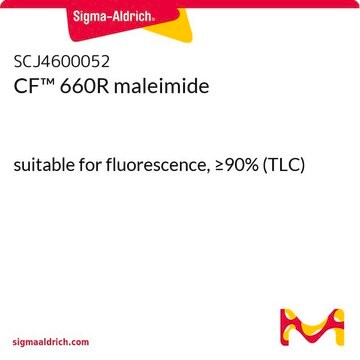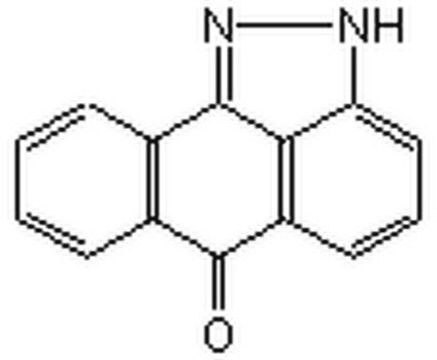S3388
Sulforhodamine 101 acid chloride
Technical grade
Synonyme(s) :
Sulforhodamine 101 sulfonyl chloride
About This Item
Produits recommandés
Forme
powder
Composition
Dye content, ~75%
Impuretés
~1 mol/mol chloroform as solvent of crystallization
Solubilité
methanol: 10 mg/mL
Fluorescence
λex 586 nm; λem 605 nm in H2O
Application(s)
diagnostic assay manufacturing
hematology
histology
Température de stockage
−20°C
Chaîne SMILES
[O-]S(=O)(=O)c1cc(ccc1C2=C3C=C4CCC[N+]5=C4C(CCC5)=C3Oc6c7CCCN8CCCc(cc26)c78)S(Cl)(=O)=O
InChI
1S/C31H29ClN2O6S2/c32-41(35,36)20-9-10-21(26(17-20)42(37,38)39)27-24-15-18-5-1-11-33-13-3-7-22(28(18)33)30(24)40-31-23-8-4-14-34-12-2-6-19(29(23)34)16-25(27)31/h9-10,15-17H,1-8,11-14H2
Clé InChI
MPLHNVLQVRSVEE-UHFFFAOYSA-N
Vous recherchez des produits similaires ? Visite Guide de comparaison des produits
Description générale
Application
Liaison
Mention d'avertissement
Danger
Mentions de danger
Conseils de prudence
Classification des risques
Carc. 2 - Eye Irrit. 2 - Repr. 2 - Skin Irrit. 2 - STOT RE 1
Code de la classe de stockage
6.1D - Non-combustible acute toxic Cat.3 / toxic hazardous materials or hazardous materials causing chronic effects
Classe de danger pour l'eau (WGK)
WGK 3
Point d'éclair (°F)
Not applicable
Point d'éclair (°C)
Not applicable
Certificats d'analyse (COA)
Recherchez un Certificats d'analyse (COA) en saisissant le numéro de lot du produit. Les numéros de lot figurent sur l'étiquette du produit après les mots "Lot" ou "Batch".
Déjà en possession de ce produit ?
Retrouvez la documentation relative aux produits que vous avez récemment achetés dans la Bibliothèque de documents.
Les clients ont également consulté
Notre équipe de scientifiques dispose d'une expérience dans tous les secteurs de la recherche, notamment en sciences de la vie, science des matériaux, synthèse chimique, chromatographie, analyse et dans de nombreux autres domaines..
Contacter notre Service technique












